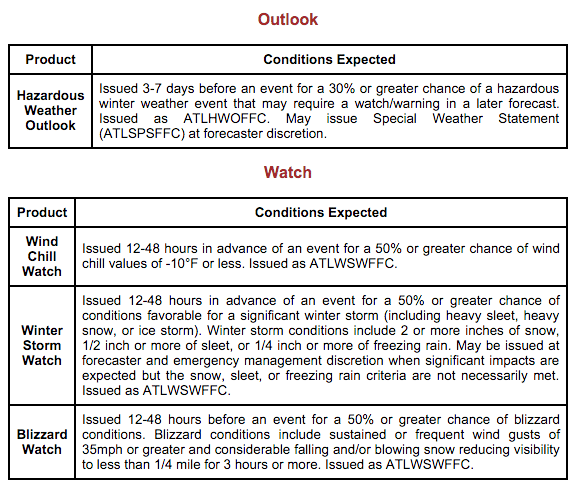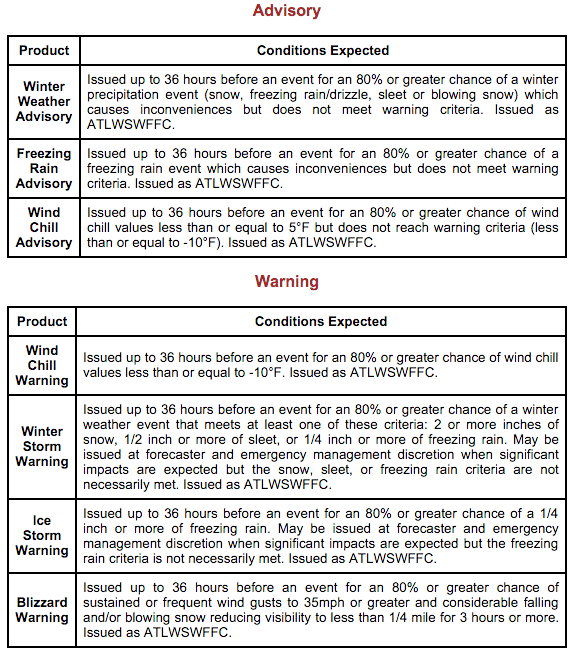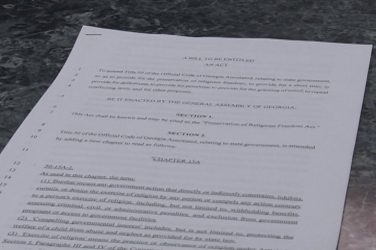This winter in particular is expected to be colder and wetter than average. Colder temperatures with more precipitation could lend way to some harsh winter weather. The National Weather Service Forecast Office says the main main threats from winter weather across the Southeast stem from snow and ice storms. The accumulation of ice on trees and power lines can cause these to fall. Bridges and overpasses generally freeze before other surfaces.Winter Weather Preparedness week is November 30th through December 4th, specifically to help you understand the risks associated with winter storms and what you can do to protect yourself.
If caught outside in a winter storm:
- Try and find shelter
- If shelter is unavailable
- Try and stay dry
- Cover any exposed body parts
- Build a fire for heat and to attract attention
If stuck in a vehicle during a winter storm:
- Stay in your vehicle
- Run the motor about 10 minutes each hour for heat
- Open the window a little for fresh air and to prevent carbon monoxide poisoning
- Turn on the dome light at night when running the engine to be visible to the rescuers.
- Tie a colored cloth, preferably red, to your antenna or door.
- From time to time, move arms, legs, fingers and toes vigorously to keep blood circulating and to keep warm
- After snow stops falling, raise the hood to indicate you need help.
If inside during a winter storm:
- Stay inside!
- When using alternate heat from a fireplace, wood stove, space heater, etc. use fire safeguards and properly ventilate.
- If there is no heat:
- Close off unneeded rooms.
- Stuff towels or rags in cracks under doors.
- Cover windows at night.
- Eat and drink. Food provides the body with energy for producing its own heat. Keep the body replenished with fluids to prevent dehydration.
- Wear layers of loose-fitting, lightweight, warm clothing. Remove layers to avoid overheating, perspiration and subsequent chill.
But what do all of the different warnings, watches and advisories really mean for you and your family? Take a look:








